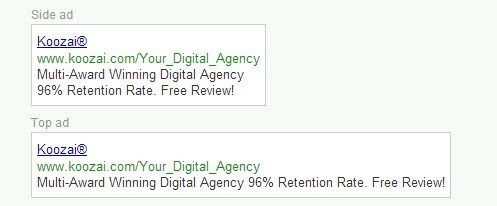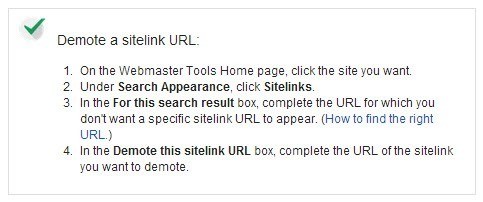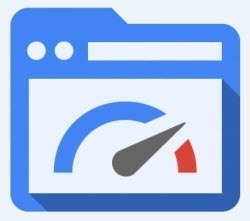 Although they may seem like mortal enemies SEO and PPC can actually complement each other in many ways. For example those working on SEO can use AdWords to gain valuable keyword data, whilst those with PPC can use SEO traffic to build up credible remarketing lists. And that’s just for starters.
Although they may seem like mortal enemies SEO and PPC can actually complement each other in many ways. For example those working on SEO can use AdWords to gain valuable keyword data, whilst those with PPC can use SEO traffic to build up credible remarketing lists. And that’s just for starters.
This blog post will explore many of the benefits of executing both SEO and PPC at the same time.
Social Extensions
The first ‘win win’ situation is the knock on effect of social signals. Any traffic you drive to your website, including via SEO, you should encourage to add you on Google+. This in turn will benefit your PPC campaign if you adopt social extensions.
Enabling social extensions on your PPC campaign will show how many people +1’d or follow your brand. This means more recommendations for your ads, helping inform users about your content.
In 2013 Google reported that advertisers have seen as much as a 20% increase in CTR from using the extension.
If the SEO team can build up a credible list of followers by sharing quality content (on Google+) the PPC team will benefit from a credible and trustworthy advert.

Geographic Data
The second ‘win win’ is where both parties can have access to geographic data in Google Analytics. If the PPC team sort SEO traffic by conversions and geographic data then they can devise a comprehensive bidding strategy.
For example, if a scooter company see they sell more scooters in Bristol they can increase their bids to be more aggressive in this market.
On AdWords Enhanced Campaigns you can set bid adjustments for specific postcodes, cities and other geographic areas. You can set campaign bid adjustments from -90% to +900% for locations.
On the flip side of the coin SEO’s can use paid search geographic data to create local search campaigns to reach the demand of their product or service.

Ad Copy & Meta Descriptions
A huge goal for any SEO or PPC professional is to increase Click through Rate. In SEO a high CTR will draw in more traffic and has been seen to improve rankings. In PPC a high CTR will lead to a better Quality Score which will lead to a better ad position.
Whether you are in SEO or PPC the best way to increase CTR is to sell the click to the user. This can be done in many ways including:
- Using the price
- Using a clear call to action
- Asking a question?
- Making your copy seasonal
- Displaying your USP
Other examples of split testing ad copy can be found here.


If you run paid and organic campaigns each team can get an idea of what works best. For example the SEO team can review the AdWords ad copy and make tweaks to their Meta descriptions.
On the flip side AdWords professionals can use ideas from successful Meta descriptions (see example above) to make their variations.
Content Marketing Ideas
If you use the Google Display Network you can place your AdWords ads on other sites next to appropriate content. The display network can be a great way to get inspiration for your own site’s content. For example, if you check which pages have a high Click through Rate on your ads (and the topic is not already represented on your own domain) then this could be a good topic for your next blog post.
Regularly run a placement report and you will find a host of content marketing ideas and topics.

Sitelink Extensions
The next dual benefit is that the SEO team can see which PPC sitelink extensions have the best Click through Rate. This will help the SEO’s choose which organic sitelinks to keep in organic search results and which ones to demote. To demote a URL simply follow the instructions below (Source):

You can analyse the performance of AdWords ads that contain sitelinks from your Ad extensions tab. The clicks column counts clicks both on your sitelinks and on your ad when your sitelinks appeared with it.

Third Party Sitelink Extensions
In limited circumstances AdWords sitelinks can point to third-party sites such as Google+, Facebook, YouTube or Twitter. This can be good for brand building and if it leads to new followers or Likes it will have a benefit for Content Marketing promotion.
Pointing PPC campaigns to social profiles will encourage users to follow the page which will help grow the brand. More info on third party links can be found here.
Site Speed
Both SEO and PPC can learn a lot from each other when it comes to site speed. Page speed is not just an SEO-only metric, slow loading pages can cause serious problems for an AdWords account.
A slow loading page will harm your natural search rankings but it will also impact your Quality Score which will make your Cost per Click more expensive. Review the site speed reports in Analytics and find pages to improve for both SEO and PPC. It’s also worth using the Google PageSpeed Insights tool.

Naturally a slow page will show a poor bounce rate in Google Analytics so paid and organic data can be useful to both parties.
Landing Pages
A good landing page for SEO is a good landing page for PPC (and vice versa). Why? A quality landing page will improve your AdWords Quality Score which will increase your ad rank and decrease your CPC. Whether it is PPC or SEO the landing page will need:
- Unique content
- Relevant Meta
- Image tags
- Clear navigation
- Relevant Header tags
- Bulleted benefits of the product or service
- A call to action
- Avoid pop ups
- Be relevant to the ad
- Be relevant to the search query
It’s important to exclude your PPC specific landing pages in the robots.txt so you don’t get penalised for duplicate content. Although on a separate note the AdWords system will reward unique content and mirroring pages should be avoided.
Keyword Research
An obvious benefit to both SEO and PPC is the dual use of keyword data. SEO’s can use PPC results to choose the best keywords to target naturally. PPC’s can use Google Analytics ‘site search’ data to target new keywords in their paid campaigns.
The Google Keyword Planner Tool can often be difficult to interpret especially when it comes to search volume. If you run an AdWords campaign on exact keywords you can quickly see the actual search volume for a specific term. This data is invaluable to an SEO who wants to map keywords to a specific URL.
How They Perform Together
If you have the budget I would always suggest using both SEO and PPC. If you use both you eliminate another competitor from the SERP’s. If you run the two campaigns in conjunction with each other you will almost always see an increase in CTR. This has certainly always been my experience of running paid and organic campaigns in tandem.
If you are running both it’s important the PPC team sit next to the SEO team. If not, you should meet regularly to discuss a dual strategy.
Paid and Organic AdWords Report
The paid and organic report (see below) in AdWords will give you information on how successful a specific term is when it ranks together organically and in paid search results. If you want to prove a case for using both then find the terms where you would be less successful without advertising in both mediums.

Conclusion
So there you have it. If you run SEO and PPC they can complement each other in a variety of ways. You will see an increase in CTR and you will have a bag full of useful data to play with. This will help you make informed decisions and refine both campaigns.
Get Involved
Do you think PPC can complement SEO and vice versa and do you have any other examples of how one can complement the other? I would love to hear your thoughts in the comments below.
Image Credits
Chinese Balls from Bigstock
Why Display from Google Ads
Page Speed Insights from Google

Leave a Reply